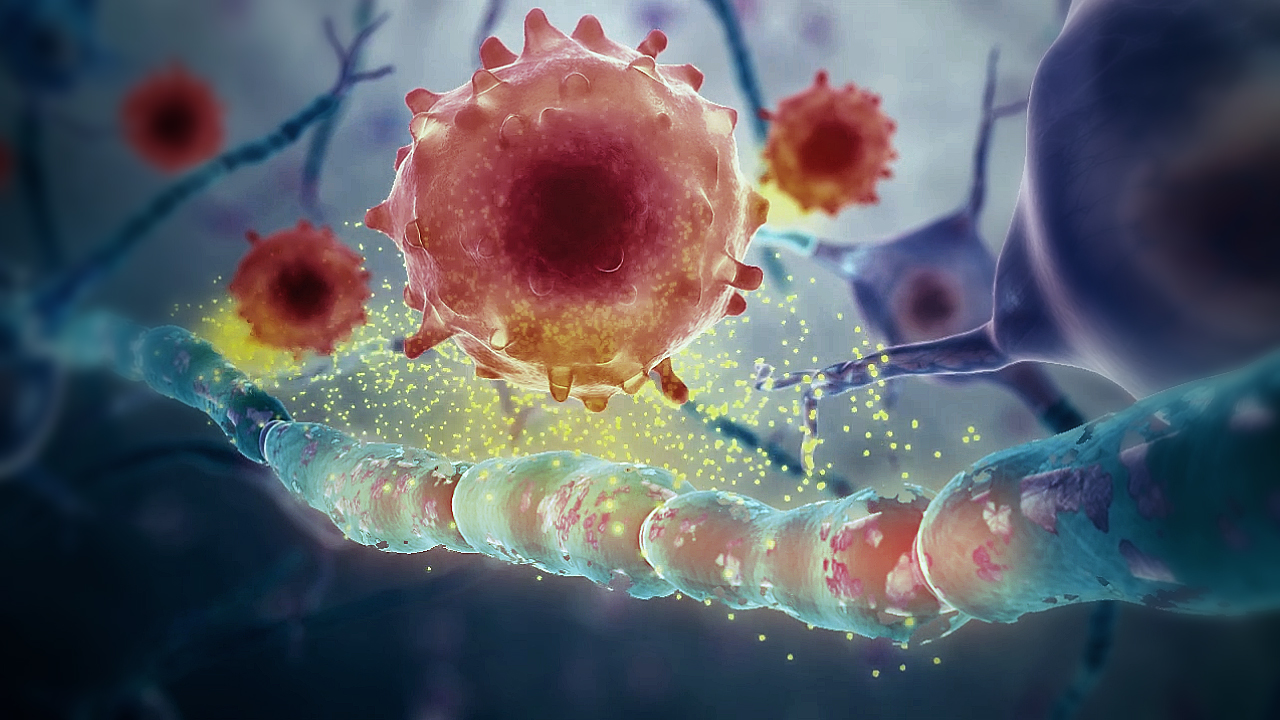When a person’s own immune cells start to attack the insulating layer, known as myelin, that covers the neurons and aids communication, it marks the onset of Multiple Sclerosis. The immune cells also attack the oligodendrocytes that synthesize myelin. The result is demyelination of neurons; and eventual deterioration of the nerve axons. The neurons of the central nervous system, constituting the optic nerves, brain, and the spinal cord, get severely injured and multiple scar tissues form on the damaged areas on nerves. Hence, the name “multiple sclerosis” with sclerosis meaning scar tissue.
Unfortunately, there is no cure for multiple sclerosis at the moment. The MS modifying drugs only work to prevent the progression of the disease, but cannot reverse it. Instead, the drugs mostly modulate the immune system to avoid further attacks or treat symptoms such as fatigue, pain, and bladder issues that are caused by the damage.
Considering the urgent need for effective treatments, particularly for those with more progressive forms of MS, it is important that the potential of all types of cell therapies must be explored. Multiple sclerosis experts are welcoming a groundbreaking treatment that shows promise for some people with the disease. It uses harvested stem cells to reset the patient’s immune systems and reverse some of the symptoms.
Can stem cell therapy be a cure?
Well, we don’t know that yet. But there is certainly a high possibility.
Many studies have concluded that a form of human stem cell therapy is more effective at treating multiple sclerosis than the best of the MS medications being used currently.
The treatment is called an autologous hematopoietic stem cell transplant (AHSCT, sometimes also shortened to HSCT). The procedure aims to suppress active disease and to prevent further disability by removing disease-causing cells and resetting the immune system.
The procedure has not yet been approved by U.S. FDA, however early results are encouraging.
This is a growing area of research but, so far, only a limited number of small scale clinical trials have taken place. There have been clinical trials of stem cell therapies to find out which types of cells and which route of delivery are most effective and also determine which types and stages of MS can be targeted. The latest and most remarkable ones are discussed below:
In Feb 2017, a clinical trial suggested that immunosuppression followed by transplantation of hematopoietic stem cells, resulted in a ‘pause’ in MS disease activity and forestalled its spread for up to 5 years, especially in the young people with relapsing-remitting MS.
Prior to that, another clinical trial of people with highly active relapsing MS suggested that two-third of patients who received immunosuppression and then hematopoietic stem cells had no relapses for half a decade and no new MRI lesions or progression of MS.
Much earlier, a 2016 study in mice suggested an association between injections of human mesenchymal stem cells (that support the repair process) and a reduction in MS-like damage to the brain and spinal cord tissues.
The results of longer term clinical trials will be essential in assessing effectiveness and safety before stem cell therapies can be made widely available to people with MS.
Goals of Stem Cell Therapy for Multiple Sclerosis
- To stop inflammation
In case of leukemia and lymphoma, chemotherapy wipes out the malfunctioning immune system and the infusion of hematopoietic stem cells ‘reboots’ it. In case of MS, a person’s own hematopoietic stem cells are collected prior to chemotherapy, which are then reinfused later. - To promote repair
The reinfusion of stem cells into the patient can cure the damage caused by MS, including myelin reformation.
What’s holding it back?
There are quite a few risks associated with the procedure too. Consider the following:
- Stem cells are capable of developing into any type of cells, including cancer cells.
- Stem cells can form any type of tissue irrespective of where they are infused. For e.g. Cells that are meant to go to the brain may form a bone tissue.
- There is always a risk of infection due to contamination of culture in the lab.
- It’s unclear whether stem cells know exactly where to go in the body.
- It’s unclear which source of stem cells is most effective.
- That stem cells are an appropriate treatment for regenerating myelin is not proven.

Bone Regeneration Using Stem Cells
Perhaps the smartest cells in the human body are the stem cells. As long as they are placed in the right conditions and right signals are sent to them, they can possibly replicate any part of the body.Read More..









